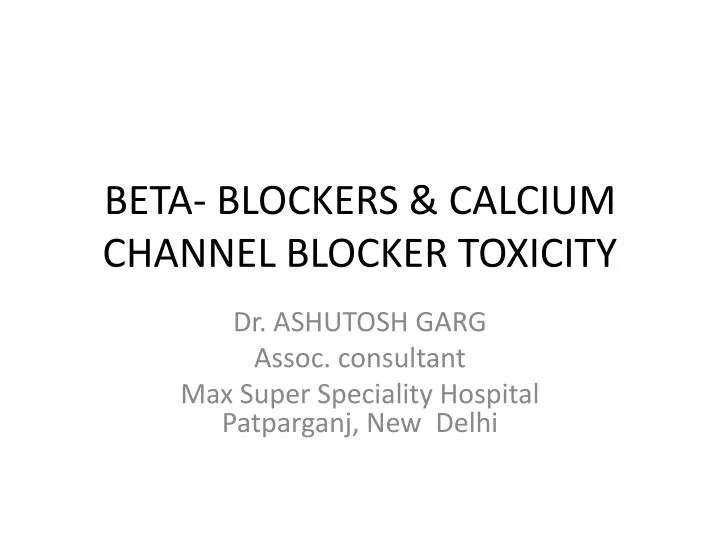
- #ANTIDOTE FOR BETA BLOCKERS SERIES#
- #ANTIDOTE FOR BETA BLOCKERS FREE#
Patients ingesting delayed-release preparations are often initially asymptomatic with a period of toxicity lasting up to 24 hours. Individuals may experience life-threatening bradycardia or CNS effects within 30 minutes of exposure.
Propranolol is highly lipophilic => CNS penetration and toxicity secondary to sodium channel blockade = toxic exposures associated with the highest fatality rate amongst beta-blockers. Protein binding varies from 0% for sotalol to 93% for propranolol. Volume of distribution: For the majority of beta-blockers, the volume of distribution exceeds 1L/kg => hemodialysis not efficacious for the majority (except as noted: see treatment). Metabolism: Beta-blockers undergo first pass hepatic metabolism => reduced bioavailability following ingestion vs. Note: acetabolol, betaxolol, propranolol, and nadolol demonstrate a membrane stabilizing effect (fast sodium channel blockade). 
Non-selective (β 1 and β 2): carvedilol, labetolol (α blockade also), oxprenolol, pindolol, propranolol, nadolol, sotalol (class II and III antidysrhythmic properties), and timolol.Cardio-selective (β 1): atenolol, acebutolol, betaxolol, bisoprolol, esmolol, metoprolol, practolol.
#ANTIDOTE FOR BETA BLOCKERS FREE#
β 2 adrenergic receptors: beta-blockers limit smooth muscle relaxation and vasodilation (vascular beds), glycogenolysis and gluconeogenesis (liver), bronchodilation (lung), and the release of free fatty acids (adipose tissue). β 1 adrenergic receptors: beta-blockers block the catecholamine effects of positive inotropy, dromotropy, and chronotropy. Pathophysiology: Beta-blockers competitively inhibit catecholamines at beta-adrenergic receptors: 1. Of these calls, 3,000 involved children under the age of 5. poison centers received > 40,000 calls regarding beta-blocker exposures. What’s the next step in your evaluation and treatment? Neuro: Alert, interacting with caregiver, behavior appropriate for age.Ībdomen: soft, non-tender, non-distended. Triage vital signs (VS): BP 88/62, HR 77, T 99.1 Oral, RR 12, SpO2 99% on room air. Based upon the date of the prescription, the grandfather reports 10 tabs as unaccounted for. 
Per the patient’s mother, the toddler was left unattended for “seconds” at her grandparent’s home and was subsequently found holding her grandfather’s medication bottle, chewing the atenolol tabs. We’ll keep it short, while you keep that EM brain sharp.Ī 3-year-old female arrives in the emergency department approximately 15 minutes following the ingestion of an unknown amount of atenolol.

#ANTIDOTE FOR BETA BLOCKERS SERIES#
Welcome to an emdocs series designed to foster your working knowledge by providing an expedited review of clinical basics. Author: Erica Simon, DO, MHA EMS Fellow, SAUSHEC, USAF) and Daniel Sessions, MD (EM Associate Program Director, SAUSHEC, USA / Associate Medical Director, South Texas Poison Center) // Edited by: Alex Koyfman, MD EM Attending Physician, UTSW / Parkland Memorial Hospital) and Brit Long, MD EM Attending Physician, SAUSHEC, USAF)







 0 kommentar(er)
0 kommentar(er)
